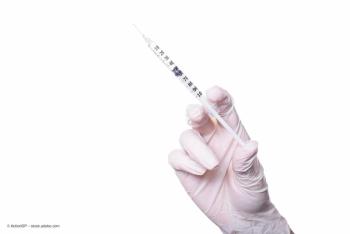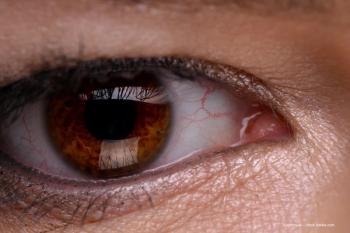
Impressions and take away points from Patient Case #2
A retina specialist discusses impressions and key take away points from patient case.
Eduardo Uchiyama, MD: My initial thoughts about this case are- we're dealing with a 55-year-old male who has active vitreal inflammation associated with macular edema in 1 eye and active vasculitis as seen on the fluorescein angiogram. The diagnosis of this patient is intermediate uveitis and appears to be asymmetric, with the left eye being affected more than the right eye. The patient has had multiple treatments, mostly local treatments and due to the use of steroids, he developed a cataract that was successful with cataract surgery. The patient had multiple episodes, so based on what we know so far that this is going to continue, so the patient needs something long-term to manage this inflammation.
Based on what we know so far, the patient has multiple episodes that respond well to steroids, mostly periocular steroids, but this recurs, We know that this condition is going to continue. The patient already had cataract surgery in that eye and based on the information we have, the patient's pressure has been normal. So, we have options. We can either treat the patient systematically, or we can treat the patient locally. Based on all the characteristics, I think local treatment would be a good option for this patient.
When we discuss local treatment, we have several different options. We can use periocular steroids, such as subtenon triamcinolone or transseptal triamcinolone. We can use intravitreal treatment, such as intravitreal triamcinolone, intravitreal dexamethasone implant, Ozurdex, or intravitreal fluocinolone implant, YUTIQ. This particular patient already had multiple periocular injections with good response, but they don't last long, so I think he would benefit from something that lasts longer.
Based on this patient’s characteristics, I think he would be a good candidate for local treatment. And when we discuss local treatment, we have different options. They're periocular injections, such as subtenon triamcinolone or transseptal triamcinolone, or intraocular steroids, such as intravitreal triamcinolone, intravitreal dexamethasone implant, Ozurdex, or a longer-acting intravitreal fluocinolone implant, YUTIQ.
To select which steroid to use, I just think about the patient's story and the patient's behavior. Choosing a proper local treatment for a patient like this, I have to think about what happened before. This patient already had multiple periocular injections that worked well, but they didn't last long, so I think periocular injections are not a long-term solution. This patient needs something that lasts longer. With a patient like this, I would consider either periocular or intravitreal triamcinolone or a dexamethasone implant first just to try to control the inflammation acutely.
And after the acute inflammation is controlled, I would consider injecting a longer-acting implant, such as the fluocinolone implant, YUTIQ. That implant would release small amounts of steroids for up to 3 years and in many patients that will be enough to control the inflammation. In some patients that might not be enough, but it will help decrease the need for more frequent injections.
The difference between the dexamethasone implant Ozurdex and the fluocinolone implant YUTIQ is first, they're different steroids, and they should be used in different conditions.
The dexamethasone implant lasts about 3 months. It has a good effect and is a strong steroid. It's very good at controlling inflammation acutely. But again, the effect wears off after 3 months and in patients like the one we discussed today, they will need more injections.
The other option is the fluocinolone implant, YUTIQ. This implant uses a different steroid that gets released up to 3 years after the initial injection and the patient gets a steady level of steroids inside the eye. This steroid is enough in many patients to control the inflammation and in other patients, it might not be enough to control the inflammation completely but that level of steroid is enough to reduce the number or the frequency of injections of other steroids to control the inflammation.
There were several takeaways from our discussion at the round table. First was how the angiogram can change if you wait long enough. One of the things that I always teach the residents and fellows is that when you do an FA [fluorescein angiography] for uveitis, you should wait. Wait at least 10, or 15 minutes, and you will see new findings will follow. Second, also how to use local therapy. This patient was the perfect patient for local therapy. The patient had a good response in the past, with no IOP [intraocular pressure] response. The patient was pseudophakic and had asymmetric disease.
After the injection of YUTIQ, the patient remained quiet for over 2 years. Thank you for watching this Modern Retina presentation. We hope you found this presentation to be rich and informative.
Transcript Edited for Clarity
Newsletter
Keep your retina practice on the forefront—subscribe for expert analysis and emerging trends in retinal disease management.













































